
If you are looking for an inclusive toyline with racial and gender diversity, GI Joe is there. At the recent 2016 GI Joe Convention, Hasbro took a major step forward in addressing the lack of female action figures on the market, and increasing inclusiveness in the toy aisle in general. Below is the upcoming line up of GI Joe action figures:
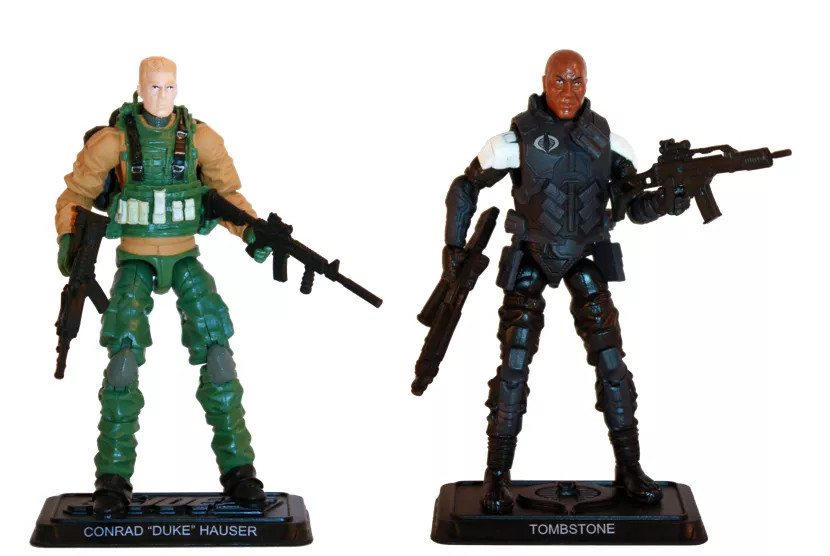
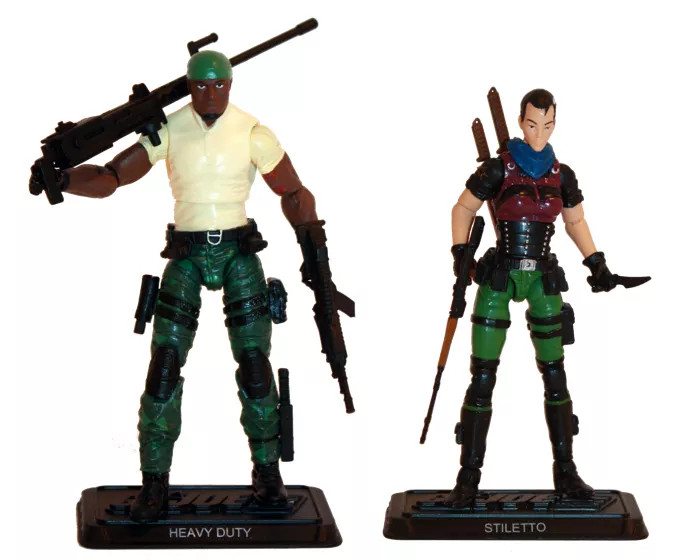


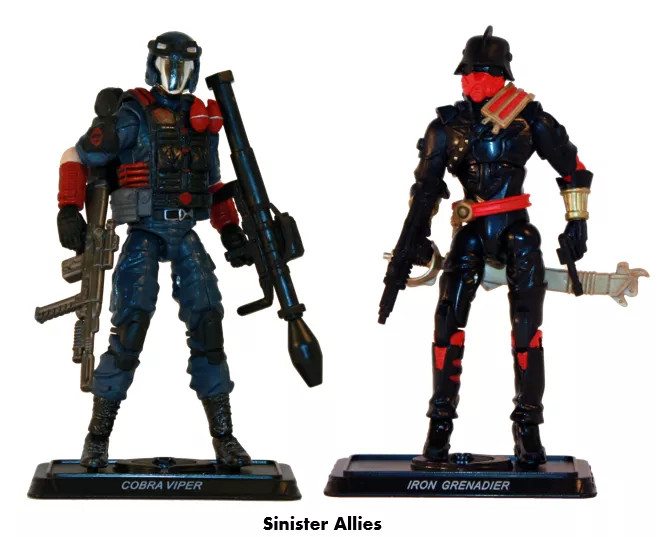

The diversity is intentional. In a recent interview on the What’s On Joe Mind podcast, GI Joe brand manager Derryl DePriest and Hasbro franchise manager Mark Weber discussed the wave. Some of the characters are included for less progressive reasons; they had to release a Heavy Duty this year or they would lose the rights to the name, and that Storm Shadow is an exact replica of one from last year that was hard to find, so they carried it forward (the same is true of Snake Eyes, the Viper, the Iron Grenadier, and the Zombie-Vipers). But others—namely Tombstone, the female Cobra officer, and Shooter—were specifically to diversify the line.
“We wanted to build an African American Cobra character of some substance, of which there haven’t been too many,” says DePriest, of Tombstone. “And we wanted him to be the opposite of Duke, a Cobra battlefield commander.”
As for the female Cobra Officer, “the fans have asked for it forever, a female Cobra trooper, officer.” And she wasn’t the only figure in the wave fans influenced, or even the only female figure. Stiletto is noteworthy for how the toy came to be. In 2014, Hasbro added GI Joe to the open Kindle World license, an Amazon initiative that let authors sell digital novels tied into select licensed worlds (including GI Joe). Effectively, it allowed authors to write and sell licensed fiction without having to pay license fees. To support this effort, Hasbro ran a contest where fans could vote for one of four original GI Joe characters created in Kindle World works to be immortalized as official GI Joe action figures. Of the four characters, two were female, one of which, Stiletto, won. So even though it’s commonly implied that boys won’t buy female characters, GI Joe fans emphatically disagreed.
The two female characters on the Joe side are each noteworthy. Shooter is based on a character who first appeared in the 2006 GI Joe: Declassified comic series, although she technically dates back to the first issue of the original GI Joe comic series, 1982’s GI Joe #1. A character named Shooter, whose face is obscured, is listed alongside the 13 GI Joes who had toys on the shelf at the time. The story goes that penciler Herb Trimpe didn’t like how the 13 faces filled the space, so a 14th was added for symmetry reasons and named after Marvel editor-in-chief Jim Shooter by the letterer, who “was more or less sucking up,” says the issue’s writer, Larry Hama. Since none of this was obvious to a child reading the comic, Shooter reached legendary status through playground speculation about the identity of this 14th Joe.
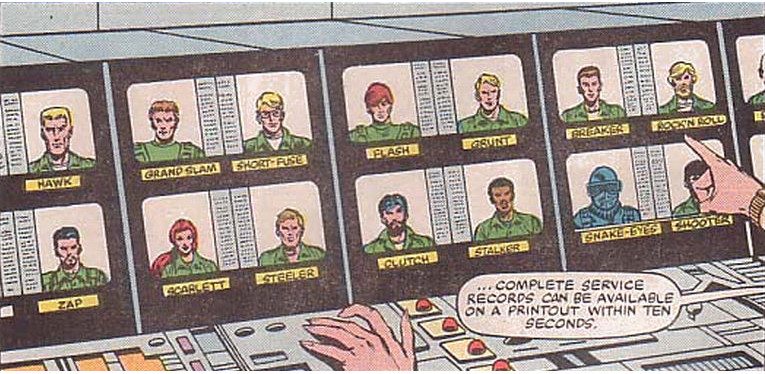
When Devil’s Due acquired the rights to the GI Joe comic, they brought Larry Hama back to tell an origin story of the original 13 Joes. In it, Hama introduced Sergeant Craig, an African-American female. She turned out to be a sniper who accompanied the Joes on their missions unbeknownst to the team, and she was revealed to be the mysterious 14th original Joe, Shooter.

There was some grumbling amongst fans at the time that the apparently Caucasian male Shooter had been race- and gender-swapped (called Starbucking, at the time), but overall the response to the ultimate reveal of the mysterious Shooter was received positively. This may be her first official action figure, but fans created custom figures based on the character’s Declassified design, and there was even an unlicensed fan project to create a GI Joe compatible Shooter.
The variety of ethnicities and the number of women in the 2016 GI Joe line might surprise people for a couple of reasons. First of all, this is Hasbro, the toy company that released this year’s Force Awakens toys that had parents and kids asking “Where’s Rey?” They released last year’s Age of Ultron toys that had Captain America (who had half a dozen figures in the line already) riding a motorcycle in a toy set based on the movie’s highway chase instead of the character who actually rode a motorcycle in that scene, Black Widow (who, at the time, did not have any figures in the line). And the year before that, parents and fans of Guardians of the Galaxy had a hard time finding Gamora toys (especially in the main 4″ line).

Yes, Hasbro released the Star Wars and Marvel-based toy lines, but as a licensee. The exact nature of the license is not available to the public, but Forbes.com reports that Disney, who owns Marvel and Star Wars, is pushing for less female representation in their boy-targeting toy lines.
GI Joe, on the other hand, is a Hasbro brand. If tomorrow Hasbro announced that from now on GI Joe was a monkey in a judo-trained chimpanzee, no one could stop them. They probably wouldn’t, if G. Wayne Miller’s Toy Wars is to be believed. Granted, it’s a 16-year-old book, but Hasbro was described as being particularly loyal to GI Joe and even a bit precious of the brand that established the company. Before Hasbro introduced America’s movable fighting man in 1964, toys that looked like people were considered dolls, girl toys.
That ties into another reason people might be surprised that GI Joe is stepping up when it comes to representation in the toy aisle. “They’re not dolls, they’re action figures” is an old joke, one that is 100% based on the GI Joe marketing campaign that made it “OK” for boys to play with plastic men. GI Joe isn’t just thought of as a boy’s toy; it literally defined boy’s toys. Furthermore, younger fans who grew up on the Real American Hero version might remember GI Joe as the brand with Roadblock, the African American man who spoke in rhymes, and Spirit, the Native American team member whose military specialty could be summed up as “the Native American team member.” Not exactly progressive.
Surprisingly, GI Joe does have an extensive history of progressiveness, particularly in the Real American Hero heyday of the early 1980s. Roadblock was not the first African American member of the Joes, he was the third. In the early days of the line, Hasbro released an African American character every year (Stalker in 1982, Doc in 1983, Roadblock in 1984, Alpine in 1985, etc). Stalker was an inner city kid who joined the military to get out of the gang lifestyle, excelling as a ranger and going on to be a green beret. OK, not the most progressive backstory, but a positive one. Doc was the Joe team’s first medical doctor. He was not a medic, it should be pointed out. He was a medical doctor, meaning he went to med school and got his MD. That’s about as far from Stalker’s backstory as it gets. Roadblock falls somewhere in the middle. Yes, he spoke jive, but Roadblock was also a chef. Not a cook like the version of the character The Rock played in GI Joe Retaliation. Roadblock had to go to culinary school. Any time he talked about cooking, it was French cuisine. And whenever Roadblock’s background was explored, he was clearly from an upper middle class family. This was all also true of Roadblock in the comics, except without talking in rhyme. Also, Roadblock has the single greatest page from any GI Joe comic ever:
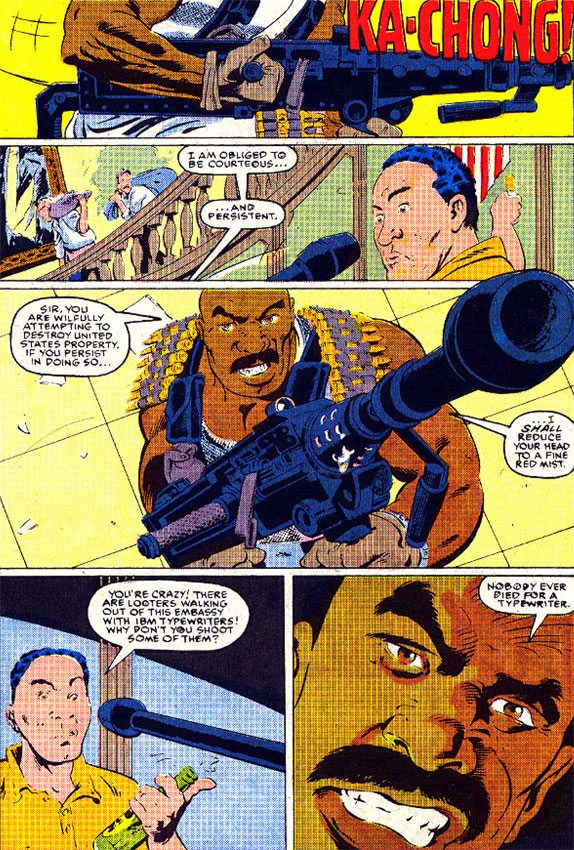
As for Spirit, yes, he is one of the members of GI Joe’s infamous Village People squad.
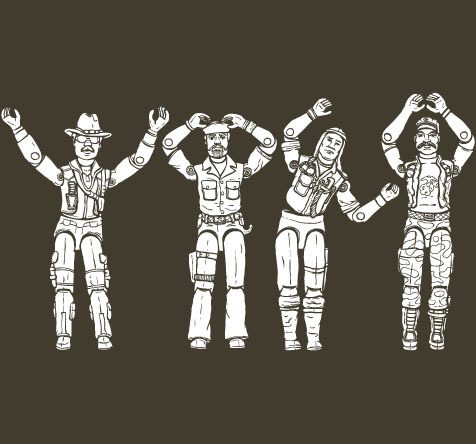
However, 1984’s Spirit was not the first or only Native American GI Joe character. That distinction goes to 1983’s Airborne. Unlike Spirit, the only indication that Airborne is Native American is his skin tone and filecard, which is probably why he didn’t stand out as much. 1990’s Altitude is a “full-blooded Apache Indian” according to his file card. 2002’s Dart was also Native American, although he was released in an era before Hasbro learned to protect its copyrights (see Heavy Duty, above) and might have just been an updated Spirit with the serial numbers shaved off. Even if that is the case, his design is certainly less stereotypical than Spirit’s. If Dart is included, that’s four individual Native American characters, more than most non-Western toylines, and, actually, more than many Western toylines too.
GI Joe’s history of inclusivity is exemplified by the year A Real American Hero debuted, 1982. OK, looking at the line up, it’s pretty homogeneous.
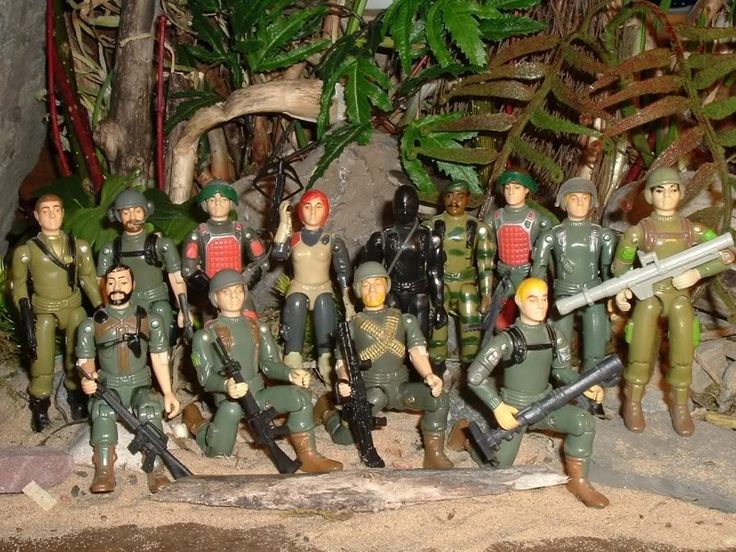
But consider the following:
- The team’s only female (Scarlett) and African American (Stalker) characters were two of only three figures from the original 13 with unique heads. Even the team leader, Hawk, used the same head mold as three other members of the team. The other character with a unique head? Snake Eyes.
- Hasbro reused a lot of parts in 1982 to save money. In fact, Scarlett was the only figure that didn’t share parts with another figure, making her the most expensive Joe figure of the original line-up. Hasbro was that committed to including a female character.
- The file names on the dossiers included with the cards indicated a variety of ethnicities on the team (Zap is Rafael J Melendez, Clutch is Lance J Steinberg, Steeler is Ralph W Pulaski). Larry Hama explored Clutch’s Jewish heritage in GI Joe: Special Missions #2, when he’s on a team assigned to work with a former Nazi scientist to neutralize a toxin in an old German bomb that was frozen in ice before it thaws.
Larry Hama’s name has come up a lot in this article. As the writer of the majority of Marvel’s GI Joe comics (an association that’s gotten him regular writing work from GI Joe’s later publishers Devil’s Due and IDW) as well as the writer of the majority of the file cards that were included with every GI Joe, he helped define who the Joes were as people better than anyone, even Hasbro employees. And yet, he once said on a panel about Asian-American creators in comics that he often felt like the “odd man out” in the industry. He says “I don’t develop characters as much as base them on people I know.” GI Joe’s diversity isn’t just an appeal to demographics, it’s a reflection of real people. “Jodie Craig was a high school classmate of mine, and I am still in touch with her,” explains Hama about making Shooter an African American female. “She was never a sniper, but she has five sons, all of whom are currently active duty military.”
Guest blogger Ryan Costello was featured on the GI Joe episode of ‘Fanatical’, and helped coordinate the Canadian GI Joe Convention for five years. He is as known for his work in the ‘Pathfinder RPG’ community as he is his passion for GI Joe, having won the prestigious Paizo Volunteer of the Year for his work on ‘Know Direction‘, the Pathfinder news, reviews, and interviews podcast.
His first child, a daughter, was born in 2015. Her name is Scarlett, because of course it is.



great read! lots of information in an entertaining and easy to read article.
Some kids were aware that Shooter was a reference to Jim Shooter. I was reading those comics when they came out. Kids are smarter than a lot of people realize. They catch details like that.
I learned a lot of new vocabulary reading all my comics, the GI Joe file cards and various vehicle manuals and instructions. We didn’t have the internet but a kid exposed to a lot of new things like that will absorb that knowledge.
GI Joe was way more informative than a lot of people may give it credit for. I learned of the Warsaw Pact and NATO at age 8 because I was curious what they meant and asked my dad whenever I didn’t understand a word. Good memories of collecting those old figures. 🙂